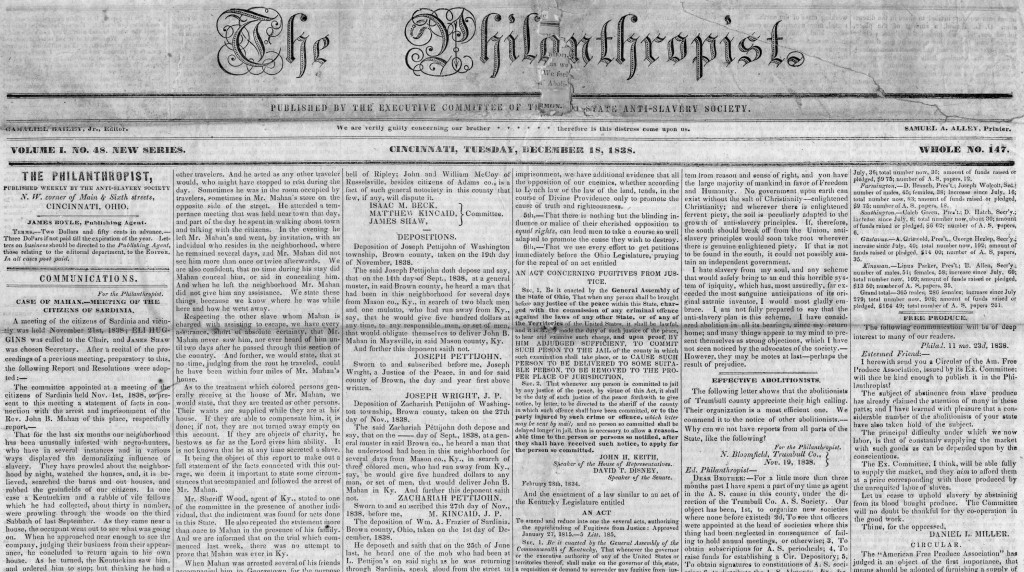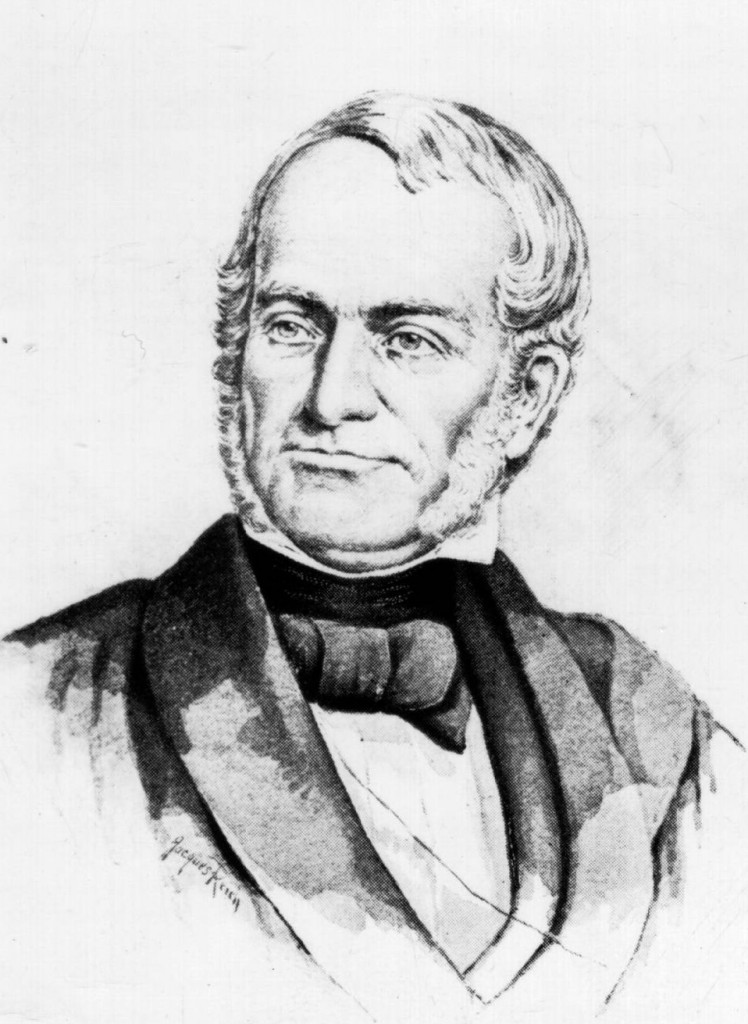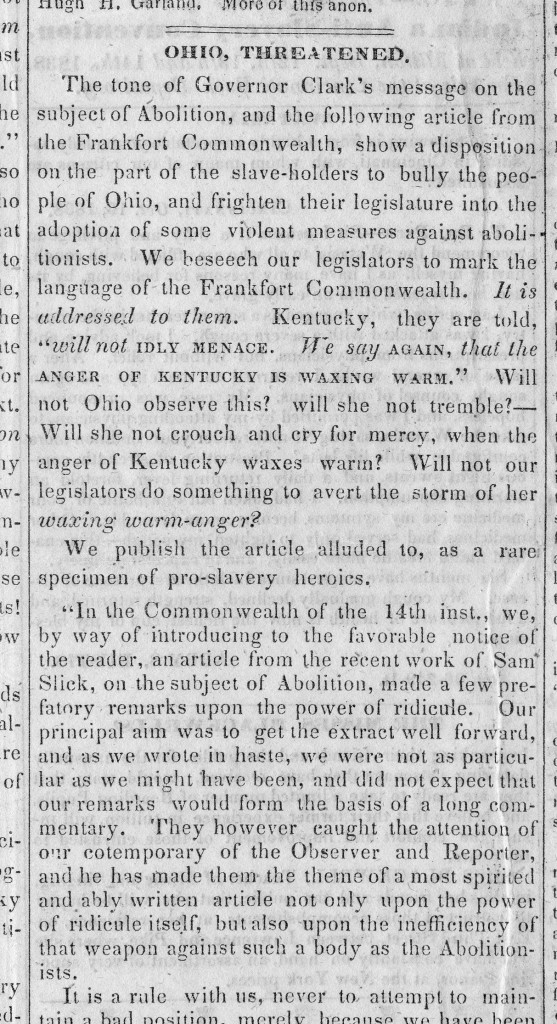From the Siebert Collection: The Philanthropist


For our first featured item from the Siebert Collection, open to the public during Black History Month, we’re highlighting an 1838 edition of The Philanthropist, an important anti-slavery newspaper from Ohio’s abolitionist history.
The paper was similar in name and nature to an earlier version, first published in Mount Pleasant, Ohio, in September 1817. The earlierPhilanthropist was edited by Charles Osborn, a Quaker who called for slavery’s abolition, and it was the first anti-slavery gazette newspaper in the United States. Osborn soon emerged as one of the leading abolitionists in Ohio, and The Philanthropist enjoyed a wide circulation, principally in Ohio and Pennsylvania. A new publisher, Elisha Bates, acquired the paper in late 1818, and continued to print it until 1822. While Bates was the editor, the paper continued to support both temperance and the anti-slavery crusades, in keeping with Osborn’s Quaker values. The Philanthropist also devoted space to other issues concerning Ohioans, such as internal improvements and public education. Bates also called for fair treatment of the Native Americans.

In 1836, over a decade after the original paper stopped publication, James Birney began to publish a new newspaper titled The Philanthropist in Cincinnati. Birney, a native of Kentucky, was a staunch abolitionist who advocated an immediate end to slavery, and rejected the more gradual approach proposed by the American Colonization Society and other abolitionists of that time. He also believed that African Americans were entitled to all the same rights and opportunities as white citizens. Many Cincinnatians opposed these views, and on July 12, 1836, a mob of the paper’s opponents destroyed the newspaper’s printing press. A brief account of this destructive riot can be read in a Cincinnati Commercial Gazette article collected by Siebert, “When Slavery was Popular and Defended in Cincinnati.”
Undeterred, Birney remained in Cincinnati and continued to publish his newspaper. The mob returned later that same month, and destroyed the printing press again. Birney was able to resume publication of The Philanthropist in September 1836, and he continued to publish it in Cincinnati until October of 1843.
This paper, and the various individuals involved with its publication, was pivotal in supporting and expanding the abolitionist cause in the decades before the Civil War. For an extended exploration on this topic, the Siebert Collection offers “Rise of Anti-Slavery Sentiment in the Western Reserve,” an 1887 article by A. G. Riddle. Explore the history of this newspaper in the Siebert Collection, and check back next week to see another featured item!
Thanks to Lily Birkhimer, Digital Projects Coordinator at the Ohio History Connection, for this week’s post!



Leave a Reply
You must be logged in to post a comment.